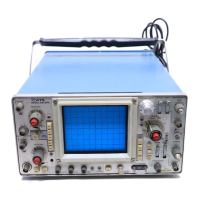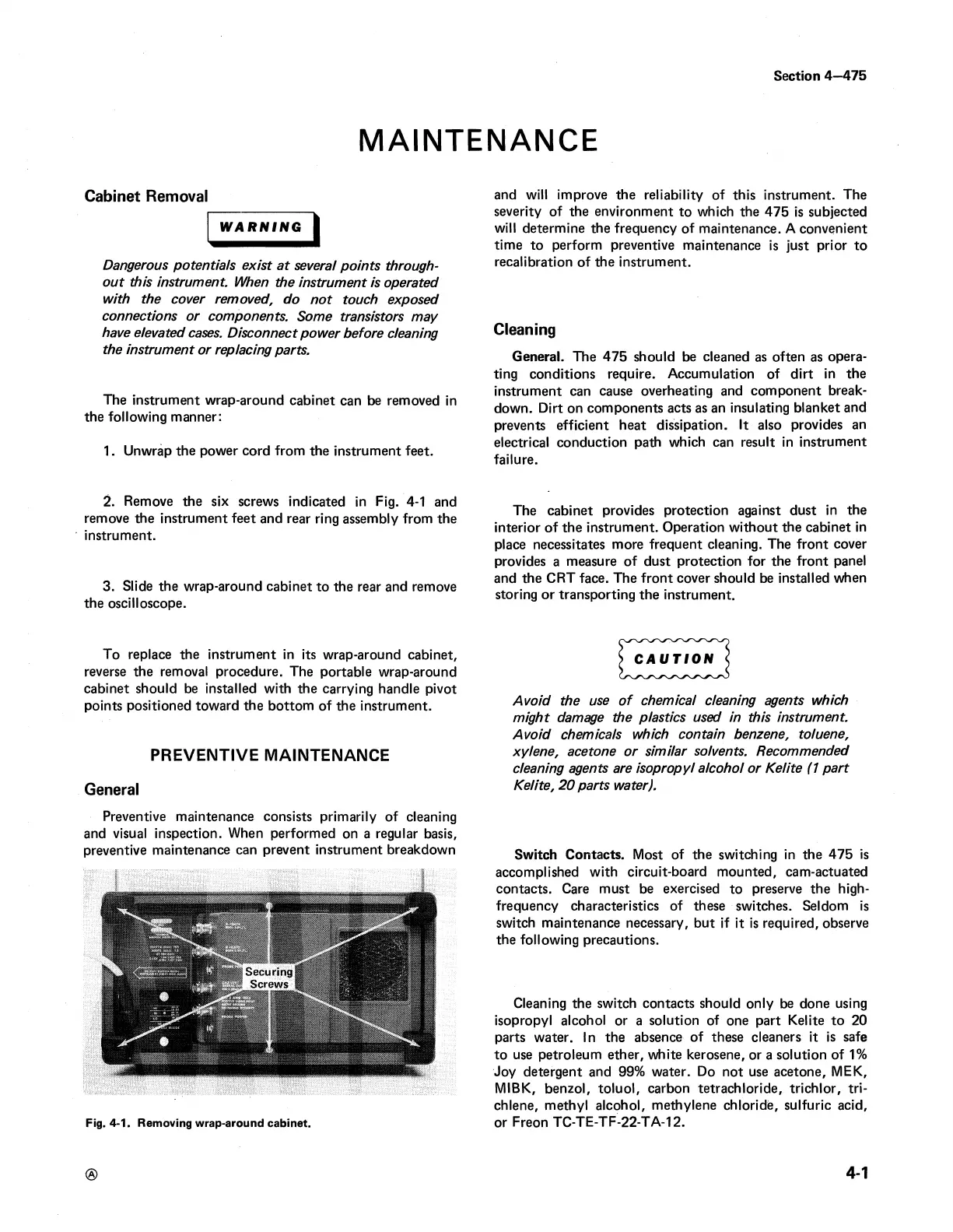Section 4—475
MAINTENANCE
Cabinet Removal
WARNING I
Dangerous potentials exist at several points through
out this instrument. When the instrument is operated
with the cover removed, do not touch exposed
connections or components. Some transistors may
have elevated cases. Disconnect power before cleaning
the instrument or replacing parts.
The instrument wrap-around cabinet can be removed in
the following manner:
1. Unwrap the power cord from the instrument feet.
2. Remove the six screws indicated in Fig. 4-1 and
remove the instrument feet and rear ring assembly from the
instrument.
3. Slide the wrap-around cabinet to the rear and remove
the oscilloscope.
To replace the instrument in its wrap-around cabinet,
reverse the removal procedure. The portable wrap-around
cabinet should be installed with the carrying handle pivot
points positioned toward the bottom of the instrument.
PREVENTIVE MAINTENANCE
General
Preventive maintenance consists primarily of cleaning
and visual inspection. When performed on a regular basis,
preventive maintenance can prevent instrument breakdown
Fig. 4-1. Removing wrap-around cabinet.
and will improve the reliability of this instrument. The
severity of the environment to which the 475 is subjected
will determine the frequency of maintenance. A convenient
time to perform preventive maintenance is just prior to
recalibration of the instrument.
Cleaning
General. The 475 should be cleaned as often as opera
ting conditions require. Accumulation of dirt in the
instrument can cause overheating and component break
down. Dirt on components acts as an insulating blanket and
prevents efficient heat dissipation. It also provides an
electrical conduction path which can result in instrument
failure.
The cabinet provides protection against dust in the
interior of the instrument. Operation without the cabinet in
place necessitates more frequent cleaning. The front cover
provides a measure of dust protection for the front panel
and the CRT face. The front cover should be installed when
storing or transporting the instrument.
Avoid the use of chemical cleaning agents which
might damage the plastics used in this instrument.
Avoid chemicals which contain benzene, toluene,
xylene, acetone or similar solvents. Recommended
cleaning agents are isopropyl alcohol or Kelite (1 part
Kelite, 20 parts water).
Switch Contacts. Most of the switching in the 475 is
accomplished with circuit-board mounted, cam-actuated
contacts. Care must be exercised to preserve the high-
frequency characteristics of these switches. Seldom is
switch maintenance necessary, but if it is required, observe
the following precautions.
Cleaning the switch contacts should only be done using
isopropyl alcohol or a solution of one part Kelite to 20
parts water. In the absence of these cleaners it is safe
to use petroleum ether, white kerosene, or a solution of 1%
Joy detergent and 99% water. Do not use acetone, MEK,
MIBK, benzol, toluol, carbon tetrachloride, trichlor, tri-
chlene, methyl alcohol, methylene chloride, sulfuric acid,
or Freon TC-TE-TF-22-TA-12.
®
4-1

